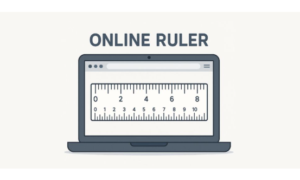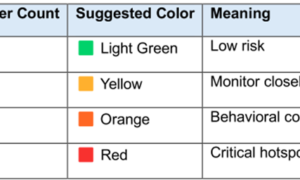It’s no surprise that as one of the most lucrative industries in the world, more and more people are pursuing a career in fitness. Whether that be as an instructor, personal trainer, gym owner, or innovator of a fitness app, there are numerous avenues to explore that can lead to successful careers in the fitness industry. However, with so much competition and an oversaturated market, especially as the digital space has flooded with fitness businesses over the past year, new gyms and studios are struggling to find ways to stand out from not just local, but global competitors.
Today, more than ever one of the biggest factors that a fitness client will use to determine who they should give their business to is price. As a fitness business, pricing your in-person and online fitness classes and one on one appointments has become one of the most, if not the most integral steps to get right in order to secure long-term success. Get your pricing right and your clients will be happy, want to stay, and continue to give you their business. Get your pricing wrong, and risk losing valuable business to nearby and online competitors who are able to offer similar value for a better price.
In this guide, you’ll learn how to price your in-person and online fitness classes and appointments, and the membership models that are most popular amongst their fitness business clients.
Common pricing mistakes to avoid
But first, let’s review some of the common mistakes fitness businesses make when trying to figure out their pricing.
Offering valuable services for free
Fitness businesses really begin to miss out on important revenue when they begin to offer valuable services for free. While the idea of free sounds nice in theory, fitness clients will often look over free services knowing that at some point those services may no longer be free or that they can come with strings attached. Rather than commit long-term, those clients will hang around until they are no longer offered free classes or content, and end up moving on to the next new thing. Businesses will struggle to retain their clients and result in running into the same issue down the line when new clients walk in the door.
Pricing classes to low
To stand out and get clients in the door quickly especially in the beginning, fitness businesses will often under-price their classes or offer a special without clarifying when that will end or how long it is good for. Offering a discount or a special is a great way to attract new clients, but without terms that are clear and upfront from the start, new clients can be confused and feel misinformed and misled.
Charging a much lower price for online classes
Most commonly with online classes, rather than pricing their online classes the same as their in-person classes, businesses will slash the prices for their online classes worried that because of the different delivery they cannot charge as much. What begins to happen is clients who attend online classes begin to feel that the service they are offered online doesn’t equate with what’s offered in-person, or if the service is the same both in-person and online, people attending classes in-person want more or want to know why they are paying so much more for the same service, thus opt to online attend online.
Finding a balance that results in the right price for the right value has enormous benefits. Whereas making these common mistakes will result in customers slipping away or not returning.
Benefits of getting your pricing right
Getting your pricing right won’t only benefit you and your business. It will benefit your customers. Fitness clients don’t want to spend their disposable income on a fitness business that will promise them guaranteed value for a certain price only to fall short. Agreeing to a certain price or purchasing a membership is their investment in that gym, studio, or personal trainer and they want to make good on their return on investment. Finding the right price for your memberships and services can help you as a business owner:
- Provide the best quality service to your customer
- Give them the exact services and offering you promise for the right value that they agree on
- Attract more of your ideal client and avoid people coming in to trial your services without any intention of pursuing a membership or relationship with you
- Secure capital for your business that can help you continue to improve on your services, quality, and offering
- Build proper membership models so that customers can find the perfect option for them and their needs
- Offer classes and sessions that won’t lead to overbookings, packed classes, and scrambling to fill empty classes.
- Getting your customers to pay online in advance will help you forecast your income and business’s revenue. It will also ensure customers commit to a period of time whether that’s a week, a month or a year, their subscription is enough time for you to prove why your services have value for them.
Popular fitness business membership pricing models
Pricing doesn’t have to be one-size-fits-all, but there are several formulas that have proven time and time again to be the most successful and effective for fitness businesses. When you have management software and the right payment providers on your side, not only will you be able to offer the best prices in the market, but also offer multiple membership packages built around your customers and their needs. And to take it a step further, you’ll be able to use helpful reporting and forecasting tools to make sure that not only are you covering your immediate financial needs but that you’ll be able to earn a profit and grow from your revenue.
To set you and your fitness business up for success, here are the most common and popular fitness business membership and pricing models:
Monthly subscriptions: all-inclusive
Most commonly known as the most popular form of gym pricing, is the monthly membership subscription. This package which does fit more into the one-size-fits-all category typically includes all services and classes included in one monthly package. Customers will either have the option to purchase this plan with an automatic renewal date (if the gym or studio has booking software with an automated payment feature) or manually renew monthly in the pay-as-you-go format by either cash or debit/credit.
Large gyms and studios love this model because it is typically the least cost-efficient, while also giving customers the most control and accountability over their memberships. With all access at all times, the customer becomes responsible for how and when they use their memberships.
This type of model also works especially well for studios and gyms who offer the same classes and schedule both in-person and online monthly, so that customers can choose what classes they would like to come to and how often.
However, while large gyms and studios will often choose this model due to flexibility and lack of needing to have a hands-on approach with customers, smaller and more boutique gyms and studios will often choose another package more focused on customer retention and engagement that can only be achieved by playing an active role in the customers’ fitness journey.
Monthly subscriptions: customized packages
Many businesses both small, medium, and large will also offer their customers the option to have a monthly subscription with customized options. While this can be a little harder to keep track of, especially without software, businesses who offer multiple different services that meet individual needs will provide their clients with the ability to choose what they would like or not like included in their subscription.
This can include a certain number of in-person or online classes, for example, a monthly renewed package that includes 10 in-person and 10 online classes a month, or be as particular as this package includes 5 yoga classes, 5 boxing classes, and 5 free-gym passes to use whenever works best for them.
Where this type of package thrives is in businesses with customers who have specific fitness goals and needs and the coaches and instructors customise a plan or regime to best meet those needs. Where this type of package does not succeed is in businesses who price certain class types or services differently and double-checking what people are paying for can become confusing and overwhelming for both the customer and the business.
Membership class packs
Similar to that of the customised monthly model, class packs include a certain number of classes that can be used in a given amount of time. As the second most popular model after the monthly subscription, fitness businesses will often offer this package in lieu of monthly memberships for clients who can’t commit to taking full advantage of unlimited monthly membership but can guarantee they’ll make it to a certain number of classes a month or in a set amount of weeks.
While fitness businesses will often price these packs lower than the monthly unlimited, some will price it higher especially if they want to encourage customers to commit to a long-term monthly subscription. The time to be most aware of pricing is when offering these two packages at the same time. Saying that 10 classes is worth $100 whereas the unlimited package is worth $80 will result in customers choosing the cheaper package when really they only want to commit to a lesser number of classes. Pricing your 10 classes at $100 and unlimited for $150 will also tell customers that 10 classes for $100 is only worth $10 a class, whereas if you purchase unlimited the same exact class is valued at $15 a class (for 10 classes) or $7.50 a class if that customer attends 20 classes that month.
Giving your clients the option to experience one pack and then switch to another if they want to see what they will take advantage of can give your customer the flexibility to find the package that works best for them without locking them into a fixed contract. Make your pricing realistic and don’t force your customers to commit to a package where their needs won’t be met or fulfilled by a lack of availability or class options when it comes time to book.
Pay as you go
What this package offers in the flexibility it lacks in security. Popular for fitness businesses who do not typically have software where they can automate monthly payments or offer prepaid plans, pay as you go serves customers and businesses who simply want to pay for each class they go to at the class time.
For the customer, there is no commitment, no fear of losing their money if they have to cancel, and no worry if they decide they will just make it to the next one.
For the business however, there is no way of fully knowing who is coming to class, how many people are coming to class, or if they’ll be paid on time, because sometimes people forget and instructors will take an “IOU”. If you decide this is the best model for your business then having an attendance tracker and requirement that in order to attend the class you must bring payment on the day prior to class is the best way to ensure you get paid for your classes and don’t lose out on valuable revenue.
Annual and contract subscriptions
While this is not the most popular pricing model, many businesses especially with long workout or exercise programs that a customer needs to commit to will offer annual or contract subscriptions. Rather than process customer payments monthly or quarterly, they will require payment upfront for the entire year.
This model isn’t for everyone and customers don’t often like to be locked into a commitment especially for an entire year. However, for businesses who run long-term programs and require consistency for results to be achieved. This is a great option for cashflow, but remember to make sure that the price of this package will sustain you for the year and that in offering this package you sell the number you need to keep the lights on.
Determining the best price for your gym or studio
Only you will know what works best for your business and what you need to keep your doors (physical or virtual open) but there are several resources to assist you in choosing the right price and making sure it’s sustainable for you and your business.
- Do your market research. Find out what other gyms and studios who offer similar services in the area price their classes and services. Review what you do differently and use a comparison model to determine if you price your same services higher, lower, or somewhere around the same price.
- Identify your ideal client. Knowing who your ideal client is plays a major role in pricing your classes both in-person and online. Your ideal client is identified based on certain characteristics and demographics you are looking for in your client, and a big characteristic you will want to identify early on is how much disposable income you think your ideal client would be willing to spend on fitness.
- Experiment with your pricing without dragging your customers around. Pricing changes and updates are made all the time, but the last thing you want is to find a price that your customers agree with only to change it on them. Play around with your pricing structure before releasing your prices and evaluate how you feel about the models you have selected. Having software on your side to make these changes and see how they will affect you in the long-run will help you make the best decision for your business.
Knowing you’ve got it right
If you’ve reached the end of this article and you’re still wondering how you’ll know when you’ve got the right price for your classes and services, the truth is, you’ll know because member feedback will tell you. If your customers start purchasing memberships and stay, if you’re not scrambling for cash at the end of the month, if customers are paying on-time or even in advance, these are all indicators that not only do your customers agree with your prices, but that they agree with the value of your services enough to commit.
Don’t stress too much over pleasing everyone and remember that your ideal client will see the value in what you offer and continue experiencing that value by continuing to purchase memberships and subscribe to your services. And when in doubt, ask.



































